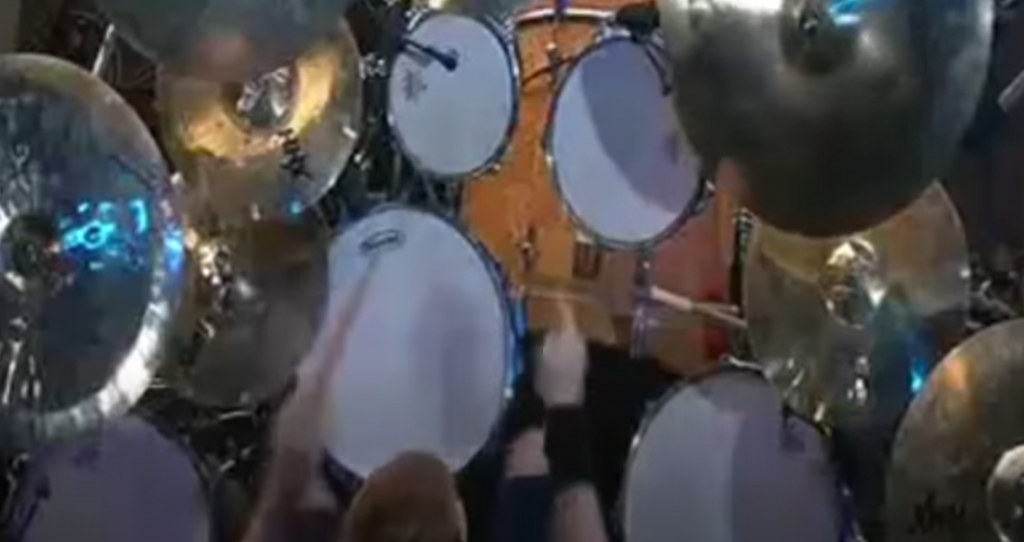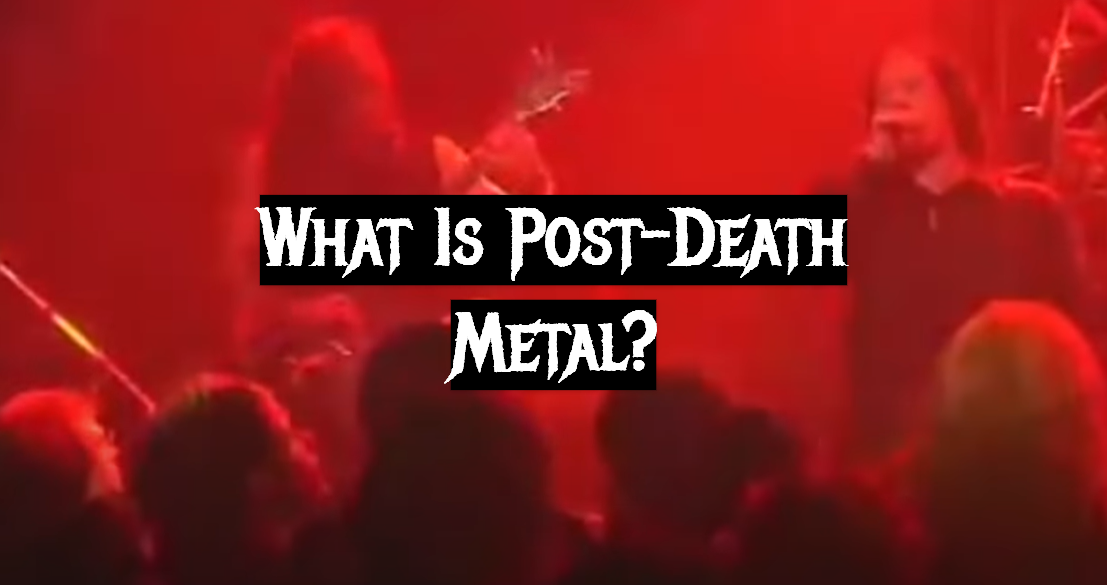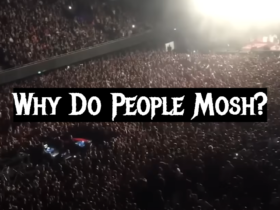What is post-death metal? This is a question that has been asked by many people over the years. The genre of music is still relatively new, and there are many misconceptions about it. In this article, we will discuss what post-death metal is, and answer some of the most common questions about it.
Table of Contents
History
The term “post-death metal” was initially coined by British writer Dom Lawson in 2008. Growing from the death metal scene, this musical genre is marked by its slower tempos, discordant chords and riffs, a thick sonic texture, and extended song structures. Post-death metal bands have drawn influence from a wide range of genres such as black metal, doom metal, progressive rock, punk rock and jazz.
It is a genre of metal music which combines elements from death metal with other genres, often creating a more experimental sound than traditional death metal. [1]
Predecessors
Post-death metal has been influenced by many different genres. It is indebted to the pioneering works of death metal bands such as Death, Carcass and Obituary who developed the genre in its early stages. Additionally, black metal bands like Mayhem and Darkthrone have also been influential in inspiring some post-death metal artists. Progressive rock acts like Rush and Genesis have also provided a blueprint for some post-death metal groups, adding their own twist on the sound.
Emergence in the 1990s
In the 1990s, bands like Neurosis and Today is the Day began to emerge as leading proponents of post-death metal. These two bands combined elements from death metal with noise rock, industrial music, hardcore punk and sludge metal to create a powerful and unique sound. Other bands quickly followed suit, such as Cult of Luna, Isis, Pelican and The Ocean who all pushed the boundaries of what was possible within the genre.

Development in the 2000s
In the 2000s, many post-death metal bands began to experiment with their sound and incorporate a variety of different influences. Deafheaven blended together black metal, shoegaze and post-rock in their music while Pig Destroyer combined grindcore, noise rock and sludge metal. Mastodon incorporated elements from progressive rock into their sound as well as heavy riffs and complex song structures.
Characteristics
Post-death metal is characterized by its slow tempos, dissonant chords and atonal riffs. The genre also utilizes dense production and extended song structures to create an atmosphere of dread and tension. Post-death metal bands often use dynamic songwriting which incorporates different influences from a variety of genres such as sludge metal, noise rock, black metal and progressive rock.
Aesthetic and culture
The aesthetic of post-death metal is often dark, bleak and brooding. The artwork for many albums in the genre features dystopian imagery and surrealist visuals. Many bands also make use of horror themes, often inspired by films such as “The Shining” and “Alien”. The culture of post-death metal has also seen a resurgence in recent years with more festivals and concerts dedicated to the genre. [2]
FAQ
Who are the big 4 of death metal?
The big 4 of death metal are Death, Carcass, Obituary and Morbid Angel. These four bands are widely regarded as the pioneers of the death metal genre and have had a huge influence on post-death metal.
What are the different types of death metal?
The different types of death metal include traditional death metal, melodic death metal, technical death metal and post-death metal. Traditional death metal is characterized by hammering riffs and growled vocals while melodic death metal incorporates more melody into its sound. Technical death metal focuses on complex compositions and virtuosic playing while post-death metal combines elements from various genres to create an experimental sound.
Why is death metal popular?
Death metal is popular because of its extreme nature and aggressive sound. It offers a cathartic and intense listening experience for fans of the genre which is something that other genres often lack. Additionally, death metal has seen a resurgence in recent years with more bands pushing the boundaries of what was previously thought possible within the genre.

Is Metallica a death metal?
No, Metallica is not a death metal band. They are considered to be part of the thrash metal genre. However, they have been influential in inspiring some post-death metal artists due to their incorporation of progressive rock elements into their sound.
Why is death metal so violent?
Death metal is often associated with violence due to its dark and aggressive sound. It also draws influences from horror films, extreme sports, and other violent activities which can be reflected in the music itself. Additionally, some of the imagery used for death metal bands can also appear quite violent as well.
What is the darkest metal music?
The darkest metal music is generally considered to be black metal. Black metal typically features fast tempos and harsh vocals which can create an atmosphere of despair and grief. Post-death metal can also be quite dark in its sound due to its slow tempos and dissonant chords.
Useful Video: 10 Greatest Technical Death Metal Bands
Conclusion
Post-death metal has become an increasingly prominent presence in the metal music scene over the last few decades. Its unique blend of traditional death metal and other genres creates a distinct sound that stands out from the crowd. With its aggressive delivery, dark atmosphere, and intense vocals, it’s hardly surprising why so many fans are hooked on this genre. Whether it be for its complexity or chaos, post-death metal shows no signs of slowing down anytime soon. For those looking to take their listening experiences up a notch, post-death metal may just be what you’re looking for. So why not expand your musical library and give this genre a try? Drop the needle and turn up the volume – let the journey begin!
References:
- https://en.wikipedia.org/wiki/Post-metal
- https://www.atmostfear-entertainment.com/opinions/listenings/aesthetics-symbolism-extreme-metal-music/






Leave a Reply